Und so funktioniert es: Einmal Nicken – und es geht los.
Steuere deinen Elektrorollstuhl einfach durch Kopfbewegungen: Die Smartglasses übersetzen deine Befehle – und der Rollstuhl macht, was du willst!
Verpasse keine News und erhalte regelmäßig Updates zu munevo DRIVE!
Saskia, seit 1,5 Jahren Nutzerin der Kopfsteuerung munevo DRIVE
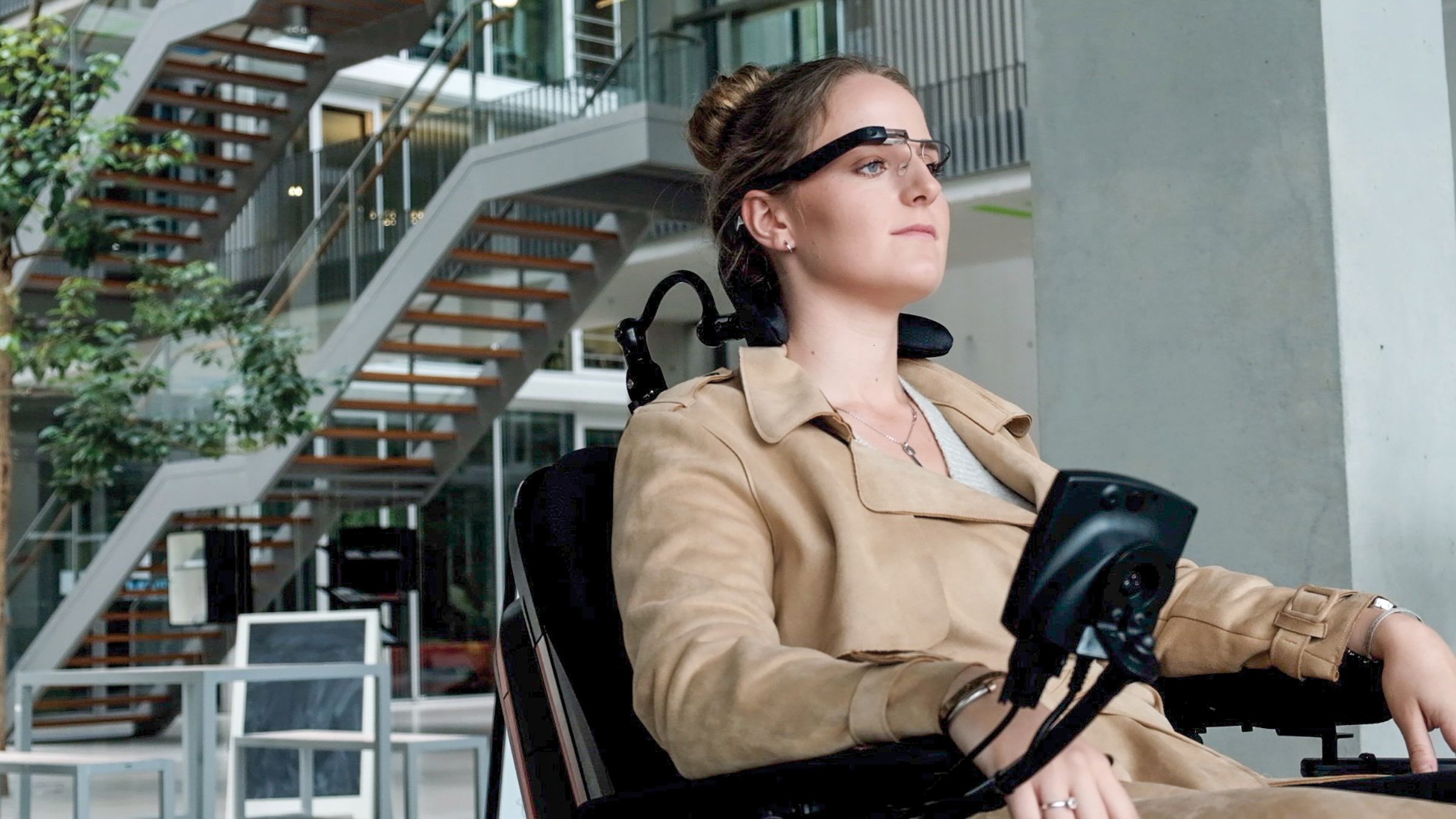
Herzlich Willkommen bei munevo – deiner innovativen Lösung für eine neue und smarte Form der Rollstuhlsteuerung! Mit munevo DRIVE bringen wir mehr Freiheit und Unabhängigkeit in dein Leben. Stell dir vor, du steuerst deinen Elektrorollstuhl allein durch einfache Kopfbewegungen per Kopfsteuerung – ohne Hände, intuitiv und mühelos. Unsere speziell entwickelten Smartglasses machen genau das möglich und sind auch eine tolle Alternative zur Kinnsteuerung. Diese smarte Rollstuhlsteuerung bietet dir eine unauffällige, leicht bedienbare und maßgeschneiderte Kopfsteuerung, die sich individuell an deine Bedürfnisse anpasst.

Zusätzlich kannst du das System mit praktischen Add-ons erweitern, um dir noch mehr Unabhängigkeit im Alltag zu sichern. Unser Ziel bei munevo ist es, Grenzen zu überwinden und Selbstbestimmtheit zu fördern. Wir arbeiten kontinuierlich daran, unsere Produkte weiterzuentwickeln – immer in enger Zusammenarbeit mit Nutzerinnen und Nutzern wie dir. Dabei fließen wertvolle Rückmeldungen über die Nutzung unserer Kopfsteuerung direkt in die Optimierung ein, sodass munevo DRIVE noch intuitiver und präziser wird. Unser Team steht dir von Anfang an zur Seite – wir hören zu, unterstützen dich und entwickeln gemeinsam Lösungen, die dein Leben bereichern und dir neue Perspektiven mit unserer Sondersteuerung eröffnen. Setze dich gerne direkt mit uns in Verbindung, um mehr über unsere smarte Rollstuhlsteuerung zu erfahren!
Absolute Freiheit. Volle Kontrolle.
Und so funktioniert es: Einmal Nicken – und es geht los.
Steuere deinen Elektrorollstuhl einfach durch Kopfbewegungen: Die Smartglasses übersetzen deine Befehle – und der Rollstuhl macht, was du willst!
Wie für dich gemacht.
Dein munevo DRIVE wird in Deutschland gefertigt und ständig weiterentwickelt – in enger Abstimmung mit Nutzerinnen und Nutzern wie dir.
Noch mehr Funktionen? Nicke mit dem Kopf!
Mit Add-ons passt sich munevo DRIVE deinen Bedürfnissen noch weiter an – zum Beispiel mit einem Modul, um dein Smartphone zu bedienen.
Menschen zu mehr befähigen
Grenzen überwinden
Selbstbestimmtheit ermöglichen
Vielfalt und Inklusion fördern
Gemeinschaft schaffen
Unser Ziel ist es, eine Zukunft zu gestalten, in der körperliche Einschränkungen nicht mehr gleichbedeutend sind mit eingeschränkten Perspektiven. Eine Zukunft, in der Technologie und Innovation dabei helfen, allen Menschen die gleiche Chance auf ein erfülltes, selbstbestimmtes Leben zu sichern. Mehr dazu
Deine Fähigkeiten sind genauso einzigartig wie deine Anforderungen. Erzähl uns von dir – gemeinsam finden wir heraus, ob munevo DRIVE zu dir passt.
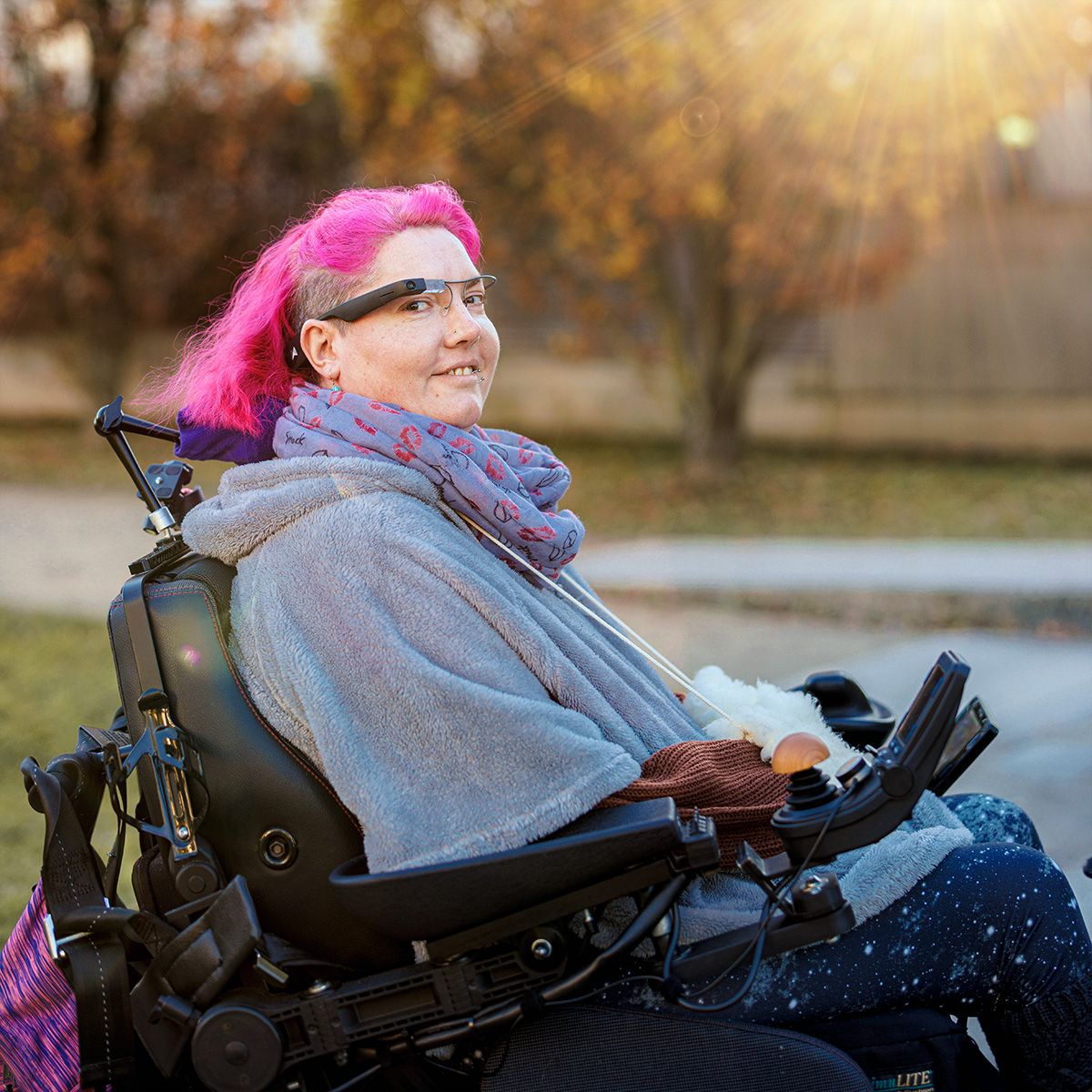
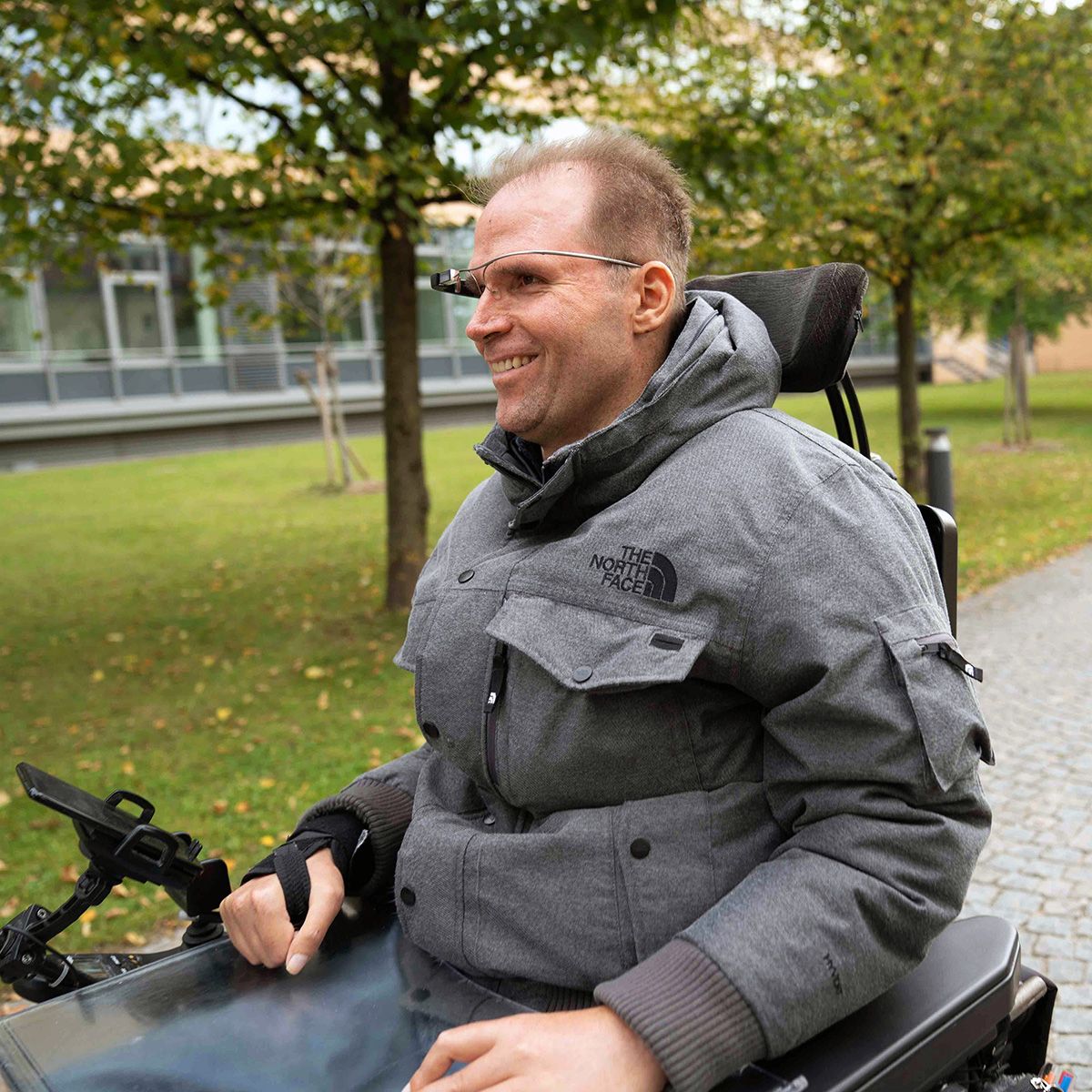
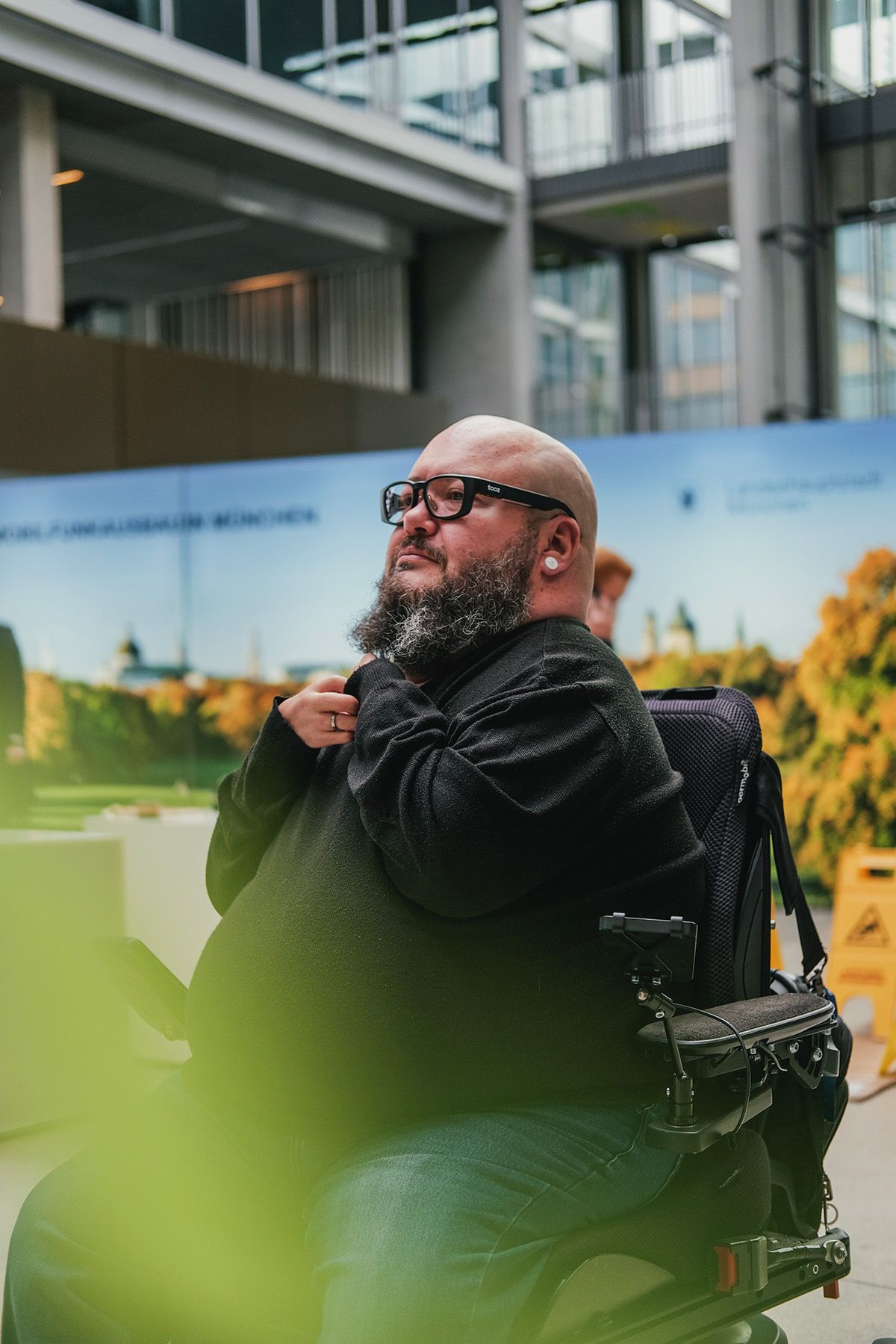
Du sagst, wo es lang geht. Wir machen es möglich.
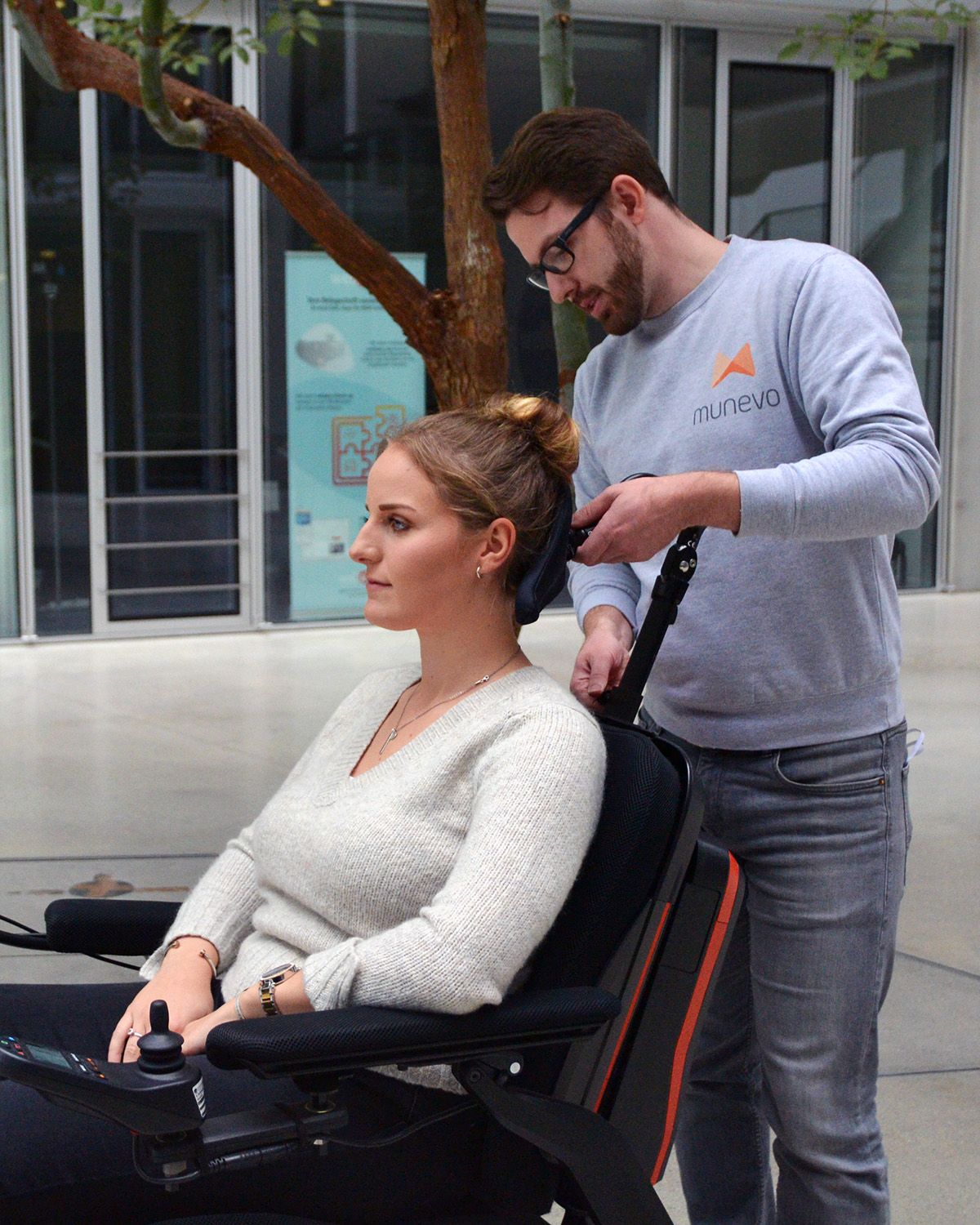
Niemand kennt unsere Produkte so gut wie wir selbst. Deshalb sind wir für dich da. Von Anfang an und immer, wenn du uns brauchst. Ob du Fragen hast, ein technisches Problem lösen möchtest oder Hilfe bei einer bestimmten Funktion benötigst. Selbst dann, wenn du Anforderungen hast, an die wir noch gar nicht gedacht haben: Wir sind gespannt – und hören dir zu!
Wir entwickeln uns immer weiter.
Für mehr Mobilität & Lebensqualität.

In unserem Blogbereich erfährst Du immer alle Neuigkeiten als Erstes. Hier veröffentlichen wir regelmäßig neue Informationen rund um Veranstaltungen, Produktupdates, Sonderaktionen und viele mehr. Viel Spaß beim Lesen und falls Fragen oder Anregungen zu unserem Blog hast, komme jederzeit gerne auf uns zu!

Jetzt kann ich bei kühlen Temperaturen nach draußen gehen, ich kann mit meinem Hund über Wiesen fahren, kann längere Spaziergänge machen und.
Saskia, seit 1,5 Jahren Nutzerin eines munevo DRIVE
Nun bin ich wieder völlig unabhängig. Ich bin sehr froh darüber, dass ich wieder herumfahren und meine Sitzposition einstellen kann, ohne dafür jemanden um Hilfe bitten zu müssen.
Christien, seit 1 Jahren Nutzerin eines munevo DRIVE

munevo DRIVE ermöglicht es mir, meinen Rollstuhl zu steuern, ohne meine Hände zu benutzen. Dadurch kann ich ganz neue Arten von Freiheit in meinem Alltag erleben.
Marcel, seit 2 Jahren Nutzer eines munevo DRIVE

Universal Design competition
Expert award 2019

German Mobility Award
2019

Digital Innovations
2018
Was ist munevo und was macht ihr genau?
munevo ist ein innovatives MedTech-Unternehmen, das sich auf assistive Technologien spezialisiert hat. Unser Hauptprodukt ist munevo DRIVE – eine moderne Kopfsteuerung für Elektrorollstühle, basiert auf intelligenten Smartglasses. Wir entwickeln Lösungen, die Menschen mit Bewegungseinschränkungen mehr Unabhängigkeit und Lebensqualität ermöglichen (basierend auf qualitativen Aussagen von Nutzer:innen).
Seit wann gibt es munevo?
Welche Produkte bietet munevo an?
Für wen sind eure Lösungen gedacht?
Was macht munevo besonders im Vergleich zu anderen Anbietern?
Wie kann ich die Kopfsteuerung munevo DRIVE testen?
Wie läuft der Kauf oder die Beantragung von munevo DRIVE ab?
Ist mein Elektrorollstuhl mit der munevo-Kopfsteuerung kompatibel?
Wo werden eure Produkte entwickelt und produziert?
Wie bleibe ich über Entwicklungen zur Kopfsteuerung informiert?
Kann ich euch direkt kontaktieren?
Arbeitet munevo mit Sanitätshäusern und Therapeuten zusammen?
Wird munevo DRIVE als medizinisches Hilfsmittel anerkannt?
Komm doch mal vorbei!
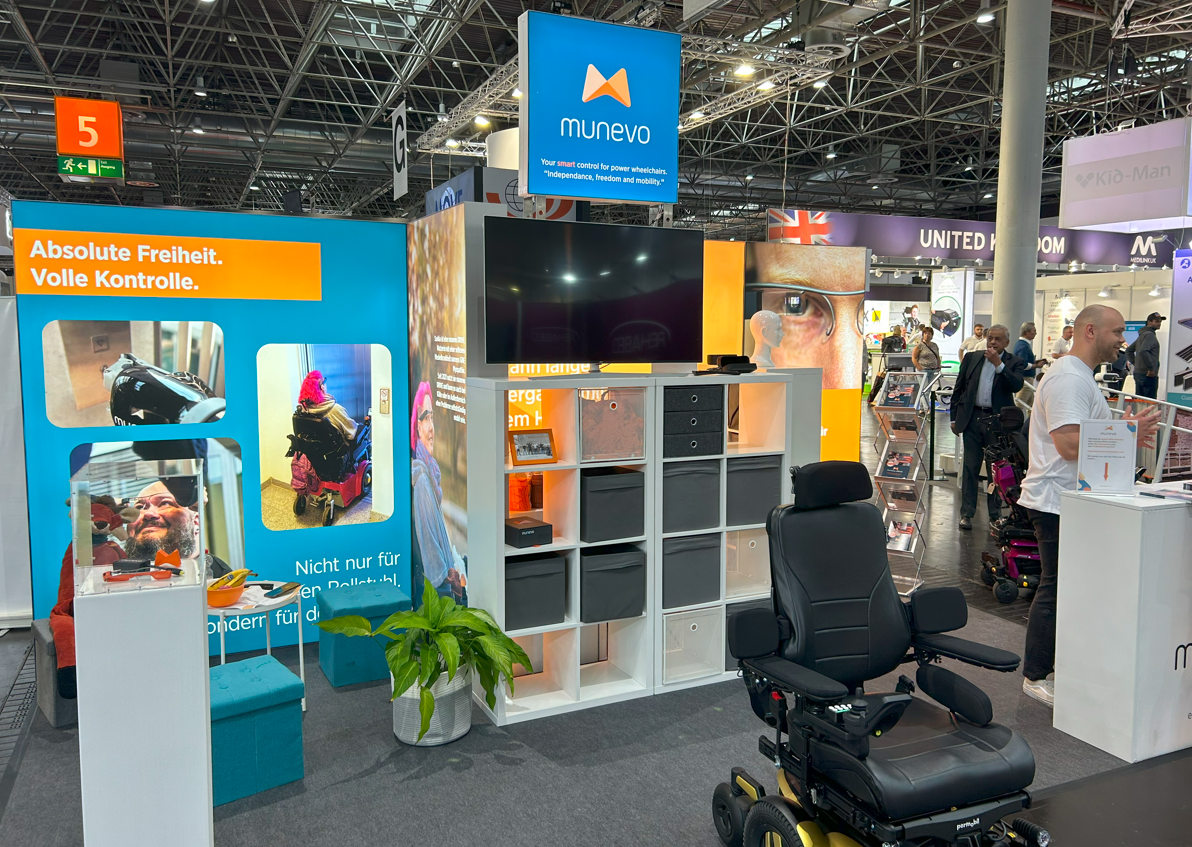
Auch in diesem Jahr wird es wieder einige Gelegenheiten geben, munevo live zu erleben. Ein besonderes Highlight können wir jetzt schon ankündigen:
Vom 17.09.25 bis 20.09.25 werden wir wieder auf der REHACARE in Düsseldorf vor Ort sein und alle Neuigkeiten rund um munevo DRIVE vorstellen. Wir freuen uns auf zahlreiche, tolle Gespräche und Begegnungen an unserem Messestand!